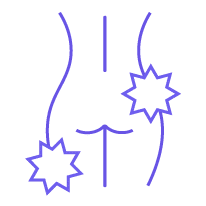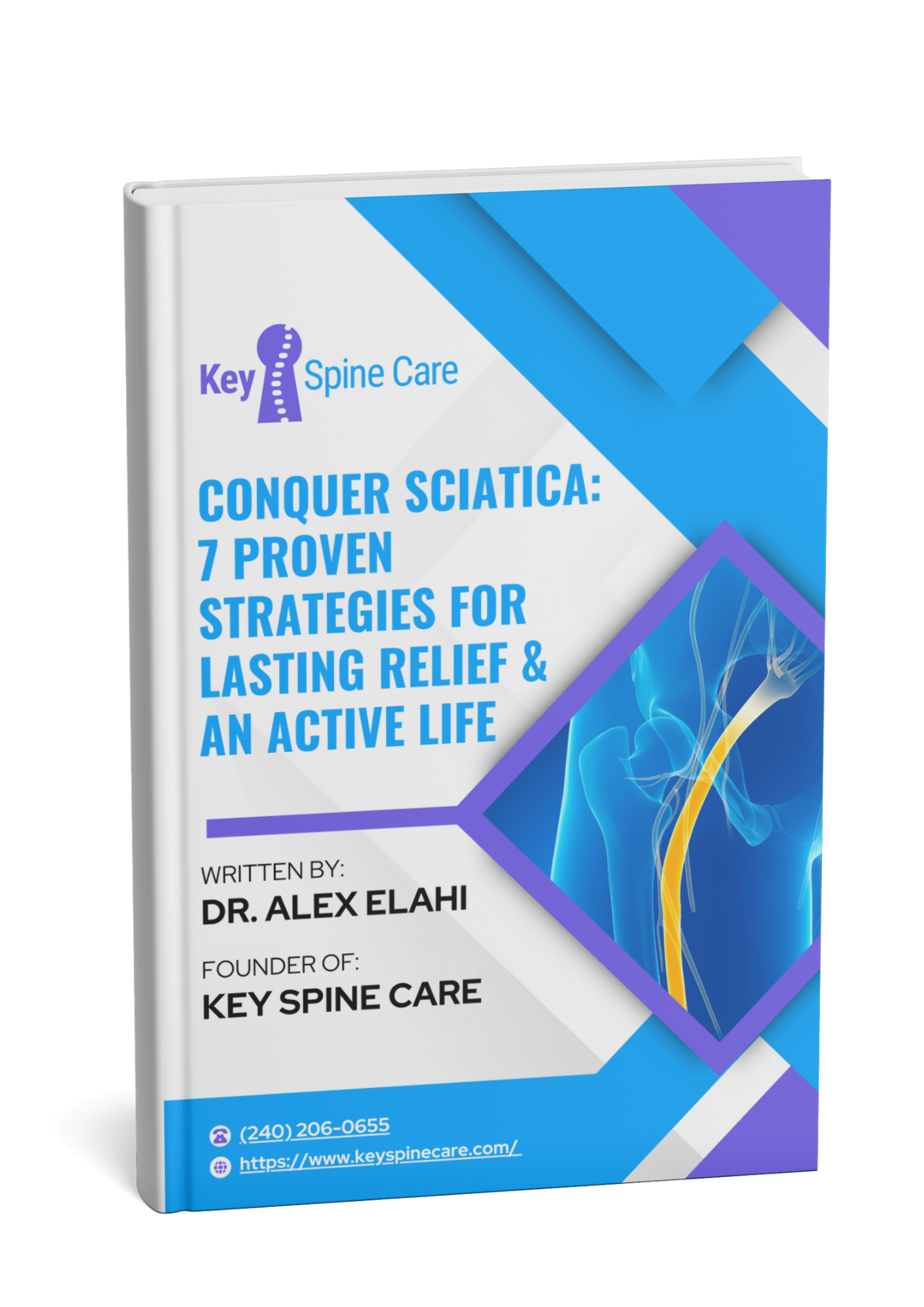
Sciatica
Pain that starts in the lower back or buttocks and radiates into the back of the leg is caused by sciatica.
Sciatica is usually a symptom of a spine-related disorder (SRD) involving the lower back.
Sciatica is a type of nerve pain that develops when your sciatic nerve is compressed or irritated, causing pain that starts in the lower back or buttocks and radiates into the back of the leg.
Your sciatic nerve is the thickest, longest nerve in your body. It’s made up of five nerve roots that exit from the lumbar and sacral spine, join together in the buttocks, and then travel down the back of your leg on both sides of your body.
Sciatica causes mild to severe pain along the path of the nerve. You may also have burning or tingling sensations or weakness in the leg.

Conquer Sciatica: 7 Proven Strategies For Lasting Relief and An Active Life
Get started today
Let’s work together for better health and less pain. Key Spine Care helps with…
- Keeping active and mobile
- Remaining (or getting) free from painkillers
- Staying out of the doctor's office
Common questions
Sciatica usually occurs from compression of the nerve as it leaves the lumbar spine. Compression occurs when there’s a change in the structure of the spine. For example, joint dysfunction of the vertebrae or a herniated disc may compress or irritate the spinal root, resulting in pain.
Your risk of developing sciatica increases as you get older because of degenerative changes in the spine that affect the spacing in between the vertebral bones.
The team at Key Spine Care conducts a thorough evaluation when you come in with complaints of sciatica pain. The team reviews your symptoms and the activities that make them worse or better. They ask about your daily routine and medical history and perform a physical exam.
The certified primary spine practitioner (PSP) at Key Spine Care conducts a thorough evaluation to determine the cause of your sciatica and whether you need additional imaging tests or a referral to a specialist.
- McKenzie Method® of Mechanical Diagnosis and Therapy® (MDT)
- Cox Flexion-Distraction Technique (CoxⓇ Technique)
- Dynamic neuromuscular stabilization (DNS)
- Joint manipulation
- Physical therapy
- Laser therapy
- Dry needling
- Instrument assisted soft tissue mobilization (IASTM)
Explore other services
Shoulder Pain
Symptoms include stiffness, limited range of motion, and pain with activities of daily living as well as sports and recreational activities.
Read More
Neck Pain
Symptoms include stiffness, limited range of motion, headaches, or even radiating pain into the shoulders, arms and hands.
Read More
Lumbar Spinal Stenosis
Can cause pain, burning, numbness, tingling, and weakness of the legs, buttocks and lower back.
Read More
Our 3 Step Process to Alleviate Pain
At Key Spine Care, we focus on ACTIVE over passive treatment plans and proudly and exclusively only offer 1:1 care (e.g. no assistants or PTAs, just you and the doctor for the entire appointment, every time). We work together as a team to implement our shared plan to treat and prevent your symptoms.
After we have determined your individual diagnosis, we create a comprehensive and individualized plan to help you resume doing what you love - without the use of rest, pills, injections, or surgery!
After this stage, you will have:
1. Eliminated the source of the pain
2. Found pain-free postures
Request a Discovery Call
After we have determined your individual diagnosis, we create a comprehensive and individualized plan to help you resume doing what you love - without the use of rest, pills, injections, or surgery!
After this stage, you will have:
1. Eliminated the source of the pain
2. Found pain-free postures
While we love our 1:1 time with our patients, we also do NOT want you to be locked into a never-ending treatment plan of 2-3 visits per week for life! Most of our treatment plans are 12 visits or less as we prioritize teaching you how to:
- Eliminate the cause of the pain
- Find pain-free postures
- Develop healthy posture and movement patterns

